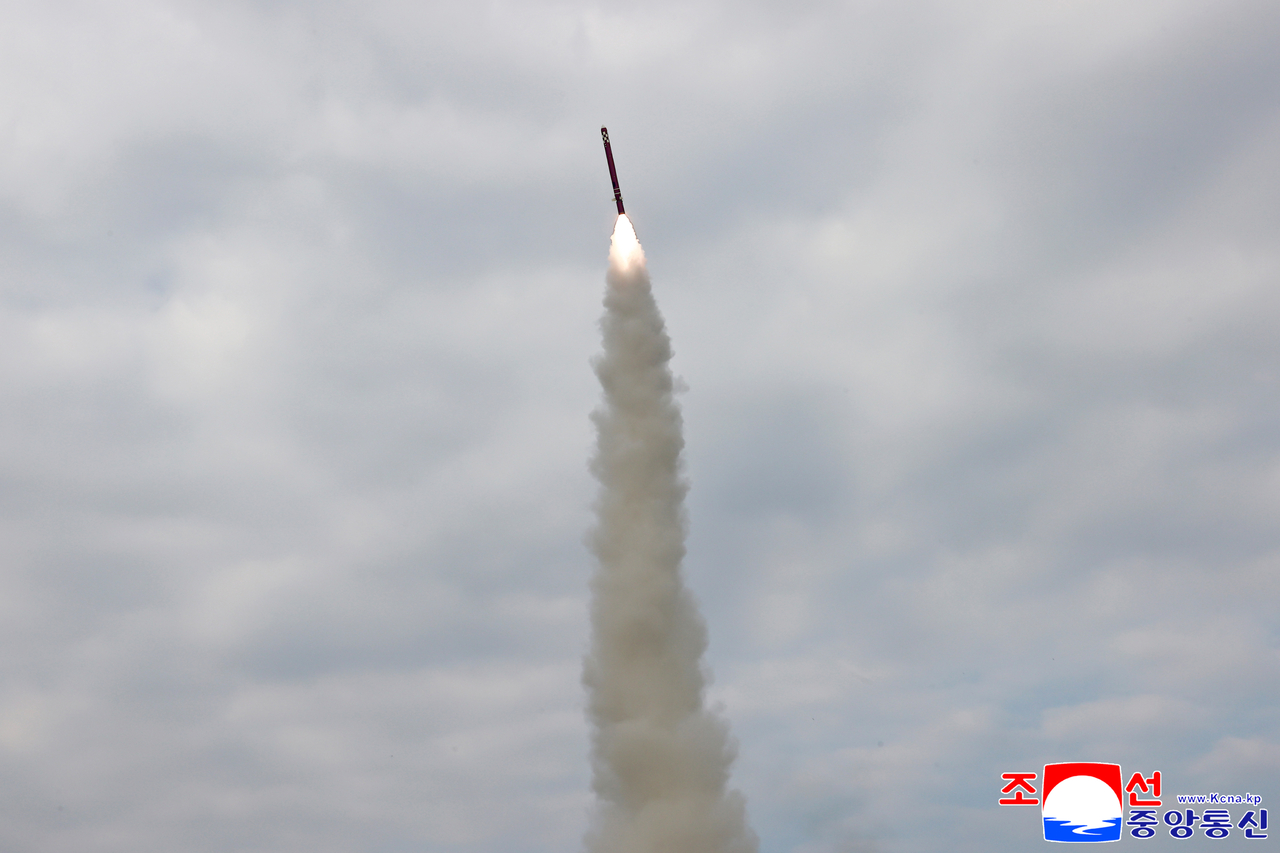 North Korea conducts a test launch of a strategic ship-to-surface cruise missile on Oct. 28, in this photo distributed by the Korean Central News Agency the following day. (KCNA-Yonhap)
North Korea conducts a test launch of a strategic ship-to-surface cruise missile on Oct. 28, in this photo distributed by the Korean Central News Agency the following day. (KCNA-Yonhap) North Korea fired a barrage of artillery rockets toward the Yellow Sea this week, in what appeared to be another show of force timed to coincide with key security events in South Korea, including a joint visit by the South Korean and US defense chiefs to the Demilitarized Zone.
The South’s Joint Chiefs of Staff said Tuesday that the North launched about 10 rockets from a multiple launch rocket system at around 4 p.m. Monday, aimed toward waters off the northern Yellow Sea.
The launch occurred less than an hour before US Defense Secretary Pete Hegseth arrived at Camp Bonifas, just south of the Joint Security Area. There, he met with Defense Minister Ahn Gyu-back for a joint inspection of the border — the first such visit by the two nations’ defense chiefs in eight years.
The North’s artillery system is believed to be the 240-millimeter multiple rocket launcher, capable of striking targets up to 40 kilometers away with standard munitions and up to 60 kilometers with extended-range rounds. The latter would put Seoul and its surrounds within range if launched from near Kaesong.
“Our military is closely monitoring North Korea’s activities under the firm ROK-US combined defense posture and maintains readiness to respond overwhelmingly to any threat,” the JCS said in a statement. ROK is the acronym for the Republic of Korea, South Korea’s official name.
The latest launch followed a similar provocation a few days earlier, when the North fired 10 artillery rockets at around 3 p.m. on Saturday, roughly 10 minutes after South Korean President Lee Jae Myung began summit talks with Chinese President Xi Jinping in Gyeongju on the sidelines of the Asia-Pacific Economic Cooperation summit.
Those projectiles flew about 30 kilometers before falling into the sea.
Seoul officials and analysts believe the launches are part of a pattern of calibrated provocations aimed at drawing international attention and expressing defiance during periods of heightened diplomacy.
North Korea’s latest actions extend a streak of military activity surrounding major diplomatic milestones.
On Oct. 22, it launched several short-range ballistic missiles, believed to be Hwasong-11DA variants, from the Jungwha area of North Hwanghae province toward the northeast.
The test marked both the first ballistic missile launch under the Lee administration and the first provocation since Japanese Prime Minister Sanae Takaichi took office.
Then, on Oct. 28, just a day before US President Donald Trump’s visit to South Korea for the APEC week, Pyongyang conducted a strategic ship-to-surface cruise missile test from the Yellow Sea.
Monday’s launch came a day before the 57th ROK-US Security Consultative Meeting in Seoul, where Ahn and Hegseth were expected to discuss deterrence measures against North Korea’s evolving missile and nuclear threats.
It also coincided with the 50th ROK-US Military Committee Meeting on Monday, where Gen. Jin Yong-sung, chair of South Korea’s Joint Chiefs of Staff, and his US counterpart Gen. John Daniel Caine reaffirmed “meaningful progress” in the conditions-based transition of wartime operational control and agreed to strengthen combined deterrence and interoperability.
mkjung@heraldcorp.com
